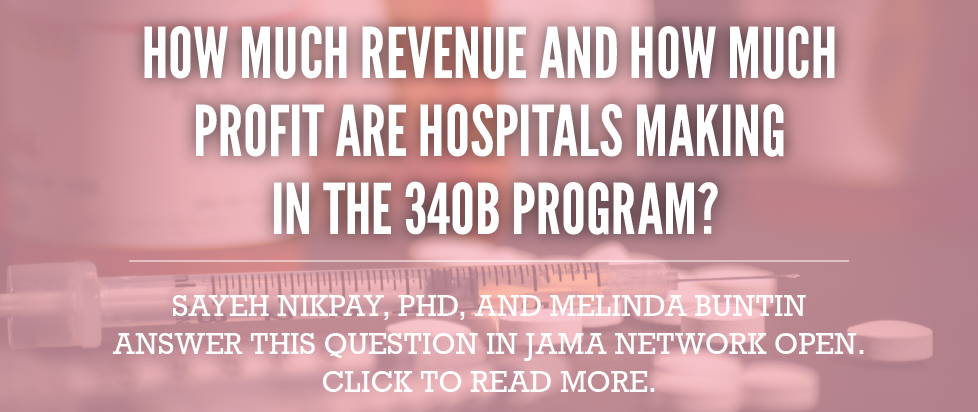
Study Finds Safety-Net Hospitals Make More Money on Prescription Drugs for Seniors
Nonprofit and safety-net hospitals are making more money from a federal prescription drug discount program, but that revenue is modest when compared to costs of uncompensated care and debt, a new study finds.
The study, published this week in the Journal of the American Medical Association Network Open, finds these hospitals nationwide made $1.9 billion in profit collectively in 2016, or about $2.5 million per hospital from Medicare patients.
Vanderbilt University School of Medicine professors Sayeh Nikpay, PhD, and Melinda Buntin, PhD, and Rena Conti, Ph.D., associate professor at Boston University, report in the study that these Medicare profits grew from 6.3% of uncompensated care costs in 2013 to 9.4% of uncompensated care costs in 2016.
The 340B program was created in 1992 as a mechanism to enable hospitals that serve uninsured and low-income populations to provide prescription drugs more affordably to patients on Medicare. The program lowers what hospitals pay for the drugs, and does not limit what hospitals can charge insurers. The study assumes a 50% discount on those drugs.
“What this study tells us is that hospitals around the country are making money on outpatient drugs given to seniors, which is notable as we’ve seen many hospitals like this around the country struggle to survive,” said Nikpay, assistant professor of medicine in the Department of Health Policy.
The profits are small when compared to the overall operating budgets of the hospitals, Conti said, but substantial when compared to levels of uncompensated care costs, which have declined due to the implementation of policies under the Affordable Care Act.
“340B profits are small in terms of overall hospital budgets but significant compared to at least one measure of safety-net care provided to their communities,” Conti said.
The researchers also note that the data used in the study was limited, in part because claims data for drugs dispensed by outpatient pharmacies within hospitals is not available, which could push total revenues and profit calculations higher than the researchers found.
“To comprehensively assess the value of 340B to participating hospitals, data on the profits reaped from sources beyond prescription drugs administered to seniors are needed,” Conti said. “Future research should examine the impact of 340B profits on the benefits hospitals provide to their communities.”
The research was funded by a grant from The Commonwealth Fund.
Vanderbilt University Medical Center is a nonprofit hospital that participates in the 340B program.
